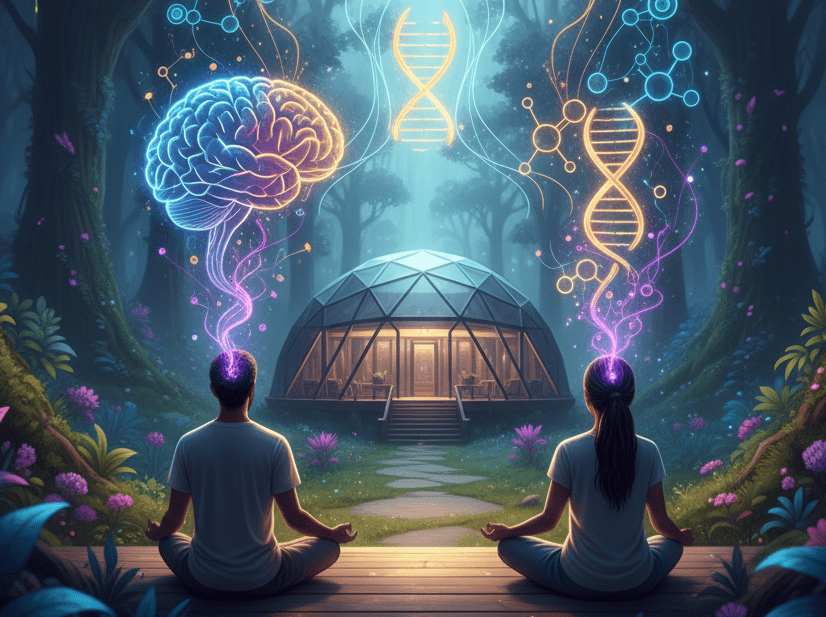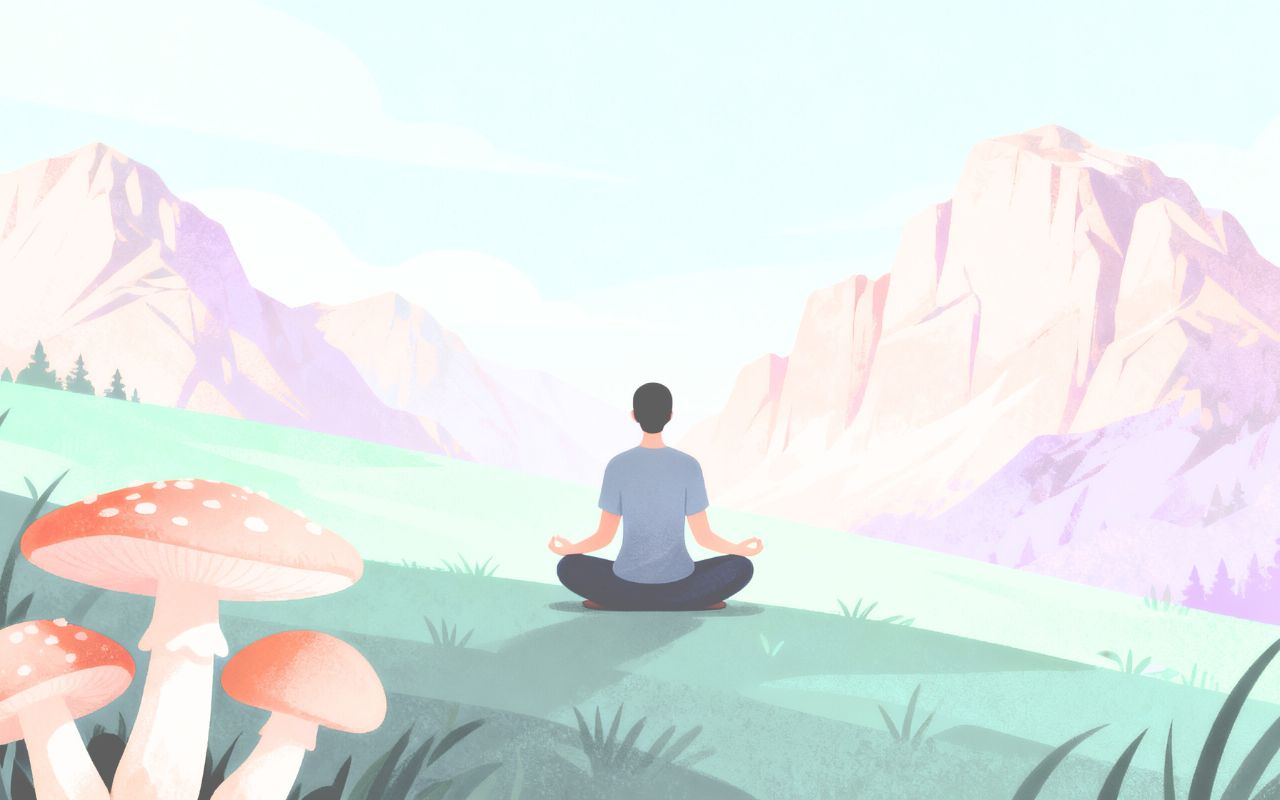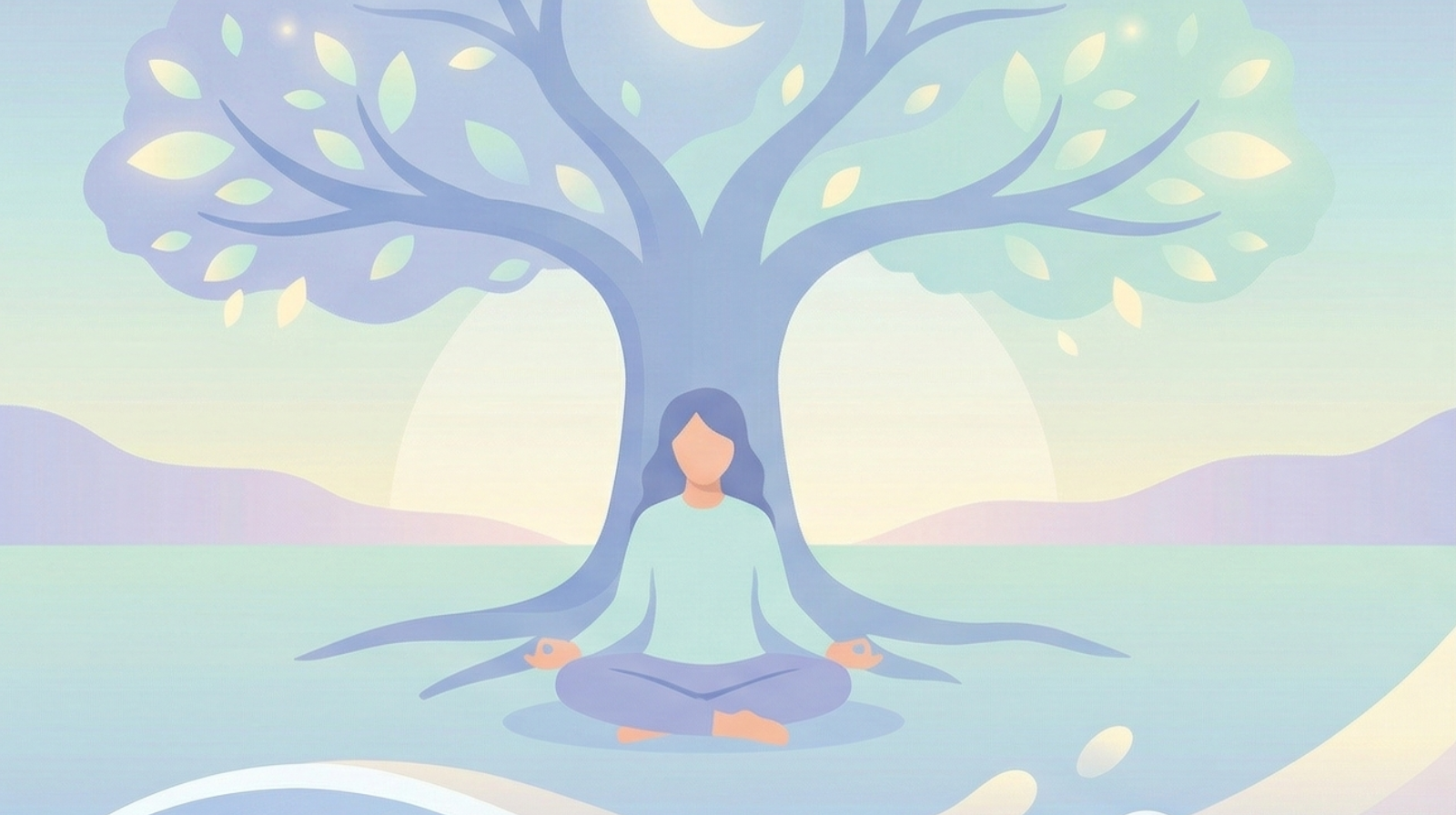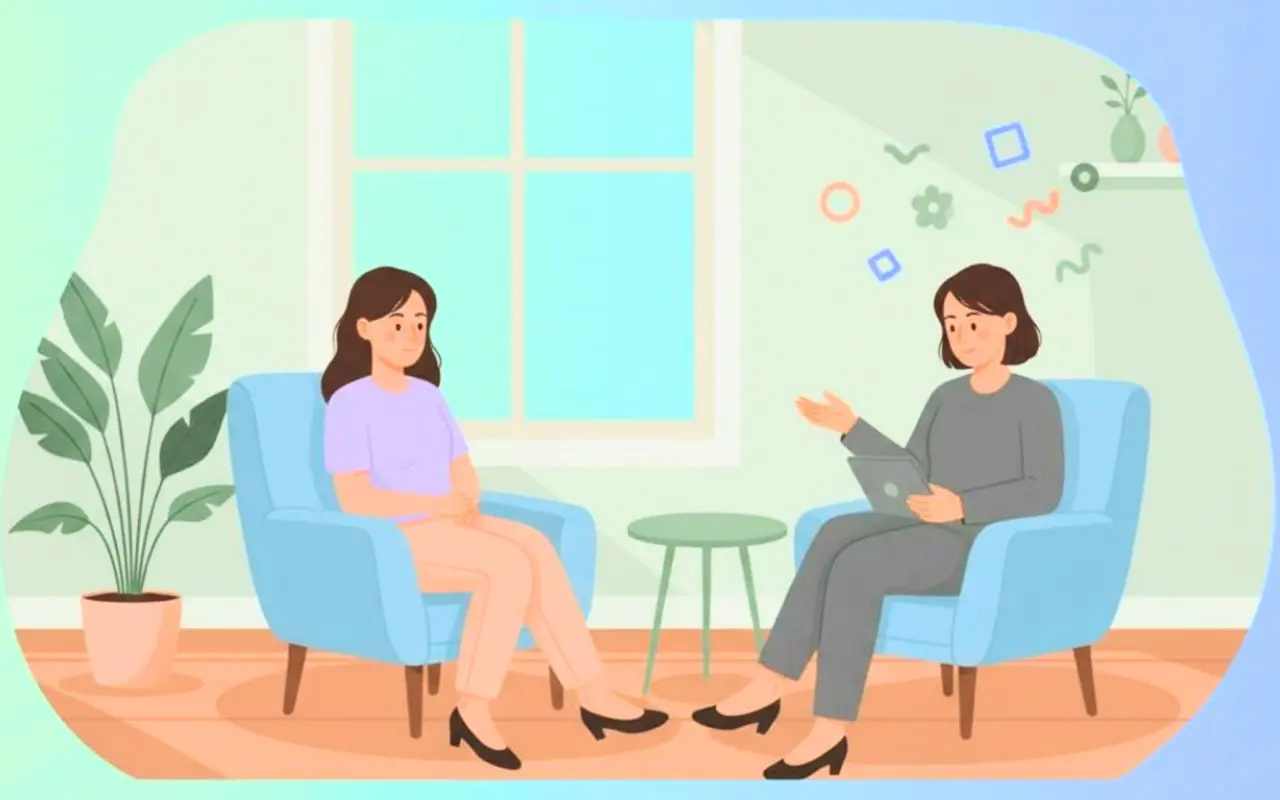
The New Frontier of Legal Psychedelics
Within twenty minutes, the mushroom tea began to take hold. A heaviness settled in my limbs, my breath deepened, and patterns of colour flickered behind closed eyes as my mind slipped from conscious control. Weeks of preparation had taught me not to resist these first waves, so I let go, released the urge to steer, and surrendered to the unknown.
That act of surrender became a defining lesson during my two-month journey with Beckley Retreats, a science-led programme operating fully within legal frameworks. Acceptance is a principle that sits at the core of the psychedelic experience, and increasingly mirrors how society is beginning to re-evaluate these historically important, though once taboo substances, now viewed through the modern lenses of neuroscience and therapy.
Over the past five years, psychedelics have re-emerged in mainstream culture. Michael Pollan’s 2022 Netflix series How to Change Your Mind reignited global curiosity, and since then, figures from Silicon Valley to European royalty have spoken more openly about their experiences.
The trend is also measurable. In the US, 61% of adults now support regulated psychedelics for therapeutic use. Against the backdrop of a global mental health crisis, with one in six Americans relying on antidepressants or psychiatric medication, it’s unsurprising that these substances are now gaining both scientific legitimacy and regaining cultural significance.
Beckley Retreats operates at the heart of this shift. Led by ex-US Army Ranger and former McKinsey executive Neil Markey, the organisation combines rigorous research through the Beckley Foundation with immersive, luxurious experiences. Guests explore psilocybin, aka ‘Magic Mushrooms’ in carefully curated settings where the law permits, either in Jamaica’s blue mountains or the tranquil countryside of the Netherlands.
Although the retreat lasts seven days, the full course spans eleven weeks, beginning with a four-week preparation phase and concluding with a six-week post-journey integration period. The first step was the barrier to entry and involved three considerate but discrete Zoom assessments covering my mental health, lifestyle, and support systems.
This was followed by a month of guided preparation through Beckley’s bespoke app, designed to ease apprehension and equip participants with the tools needed for a safe journey. They include, for example, the exercise of creating a talisman – whether a physical object or a figment of imagination – to help ground you and remind you of the real world during the ceremony.
Our group of fifteen, drawn from across the globe, gathered for our first in-person dinner at Good Hope Villa, a 2,000-acre former sugar estate nestled in Jamaica’s rolling hills. It came as a surprise to learn we had a choice of two swimming pools. We were also introduced to our resident butler and a charismatic team of staff who prepared soulful, nourishing buffets for every meal. As one of our facilitators noted, “Every meal here feels like a Sunday lunch at your favourite Jamaican auntie’s house.”
Our induction outlined the week ahead. On day three we would take our first dose, followed by a day of rest and consultation. On day five we would take a second larger dose. The days in between would be filled with yoga, meditation, massages, and time to unwind in the infinity pool or nearby beach.
Beckley Retreats places a strong emphasis on the power of group work, something I initially found daunting. Yet once a space free of judgment was established, it was remarkable how quickly the cohort formed genuine, effortless bonds. Participants came from across the globe, each carrying their own burdens. Some navigating devastating bereavements, others burned-out business owners seeking recalibration, and some looking to break out of entrenched habits. I approached with simple curiosity, acutely aware of my underlying stress and anxiety, yet unarmed with the tools to address them.
It was this curiosity that I carried into the first ceremony, which was steeped in ritual and heavy with anticipation. We sat on our individual single mattresses in a circle inside a large marquee overlooking the calm Jamaican countryside, each with a small cup of tea blended with citrus, ginger, and, of course, a carefully measured dose of psilocybin.
The first hour of my trip was kaleidoscopic – spectacular colours and intricate geometries unfolded like living origami, extending and unrolling in endless motion. Then came a deeper pull, a slow unravelling of the self. The first things to fade were mundane details – I forgot the car I drove, my job title, and where I was in the world. Then nationality, relationships, and even memory itself seemed to give way. The concept of time and space collapsed entirely, leaving me in a void with just my raw self, stripped of identity. Later, I would understand this as ego death; in the moment, it felt like being torn open, redesigned, and remade.
Out of this void rose a presence. At first, it shimmered in human form, with a low, distant hum, cloaked in a green aura. But then it broke apart into transcendental shapes with multiple supernovas of colour, pulsing, spinning, caving into themselves and blooming anew. The beauty was unbearable and violent in its intensity. Feelings of terror and awe converged, and I drifted everywhere at once, completely untethered from the real world.
At some point, I realised I could no longer recall how long it had been since I drank the tea, and with that came the surrender. I accepted that perhaps I would never return to my sober self. I felt myself merging with a higher power, dissolving into the great weave of the connected universe. It was less like I was disappearing, and more like I was returning to something I had always known but forgotten.
Then, almost in an instant, I was back.
Four and a half hours had passed. I peeled off the sleep mask, stumbled into the cool evening air, and dropped to my knees on the dewy grass. Each blade vibrated against my palm as if alive with its own pulse. Joy, unfiltered and raw, surged through me like electricity. The storm had passed and I was home. The sheer magnitude and fortune of my very existence overwhelmed me. And for the first time in my life, I cried tears of pure gratitude.
I’d like to say the experience instantly healed me. I can’t. I left feeling shell-shocked, almost traumatized. Had I glimpsed God, or simply my own mind stripped of its defences? Was the person I knew before gone for good? Those questions chased me, and the prospect of taking a larger dose felt impossible.
It wasn’t until I sat down with the facilitators that my fears began to ease. They reminded me of my intention, and that I was in a safe setting. They gave practical tools such as breathwork to steady panic, journaling prompts to translate the ineffable, and clear guidance for approaching a second journey. These included tasking unresolved questions and remaining open to long-term learning rather than demanding immediate answers. Those disciplined practices turned the aftershock into something I could work with.
The second ceremony felt like a different journey altogether, far quieter, more healing. If the first was a rocket ride into another dimension, the second was about rebuilding and finding answers to my questions. I spent the journey basking in sunlight, transfixed by the natural view in front of me, watching the hummingbirds float beside me.
I wrote pages of affirmations, insights into my true nature, and intentions for the future. Anxiety, impatience, and fear, the heavy baggage I’d carried for years, I scrunched into a ball and simply threw away, as if it were the easiest thing in the world. I walked away from the ceremony with the sense that I’d compressed a decade of therapy into a single afternoon. My mind was quieter yet sharper, my shoulders lighter, even the air itself seemed smoother, almost nourishing.
The changes were anything but subtle. Nail-biting, a habit that had followed me since childhood, suddenly felt absurd. My fear of spiders, a lifelong phobia, had vanished without a trace. I could sense my mind rewiring itself, and in a way, it was. Neuroscientists call this state ‘heightened neuroplasticity’- the brain’s ability to forge new pathways.
I learned that the brain’s communication networks are much like a dirt road. Over time, heavy trucks – your entrenched thoughts, habits, and emotional patterns – travel the same route again and again, carving deep ruts. These grooves keep traffic moving in one direction but make it difficult to turn off or take a new path. Psilocybin, research shows, temporarily smooths the road by disrupting, or “desynchronising”, the brain’s usual rhythmic firing. In that disruption, regions of the brain begin to connect in unexpected ways. Once the road is level again, traffic can move freely, opening entirely new routes for thought and behaviour.
This window of opportunity lasts for up to 6 weeks, and Beckley encourage you to use this period for self-improvement. For me, it meant setting aside ten minutes each day for meditation, initiating vulnerable yet necessary conversations with loved ones, and paying closer attention to the patterns of my thoughts. I found myself operating with a deeper sense of connection and empathy.
Research back this up. A landmark 2016 study in The Lancet Psychiatry found that 67% of patients with treatment-resistant depression were in remission a week after psilocybin therapy, and 42% remained depression-free after three months. More recently, Beckley co-published a study tracking 58 military veterans who attended legal psychedelic retreats. Over four weeks, participants saw PTSD symptoms drop by 26% and depression by nearly 30%. Those most severely affected often experienced the most dramatic turnarounds.
Nearly three months after my ceremony, the effects are still very much present. My mind feels sharper, my nails remain unbitten, and my fear of spiders no longer holds the same paralyzing grip. But the most striking change is in how I relate to my own thoughts and emotions. Negative feelings no longer linger and infect my day. What started as a dive into the unknown became a journey inward. The experience didn’t erase fear or doubt, but it showed me how to hold them lightly and meet challenges with curiosity rather than resistance. And in that subtle, unshakable shift, I believe I crossed the most valuable of life’s many frontiers.
This article was originally published on FlyVictor Magazine Issue 10


